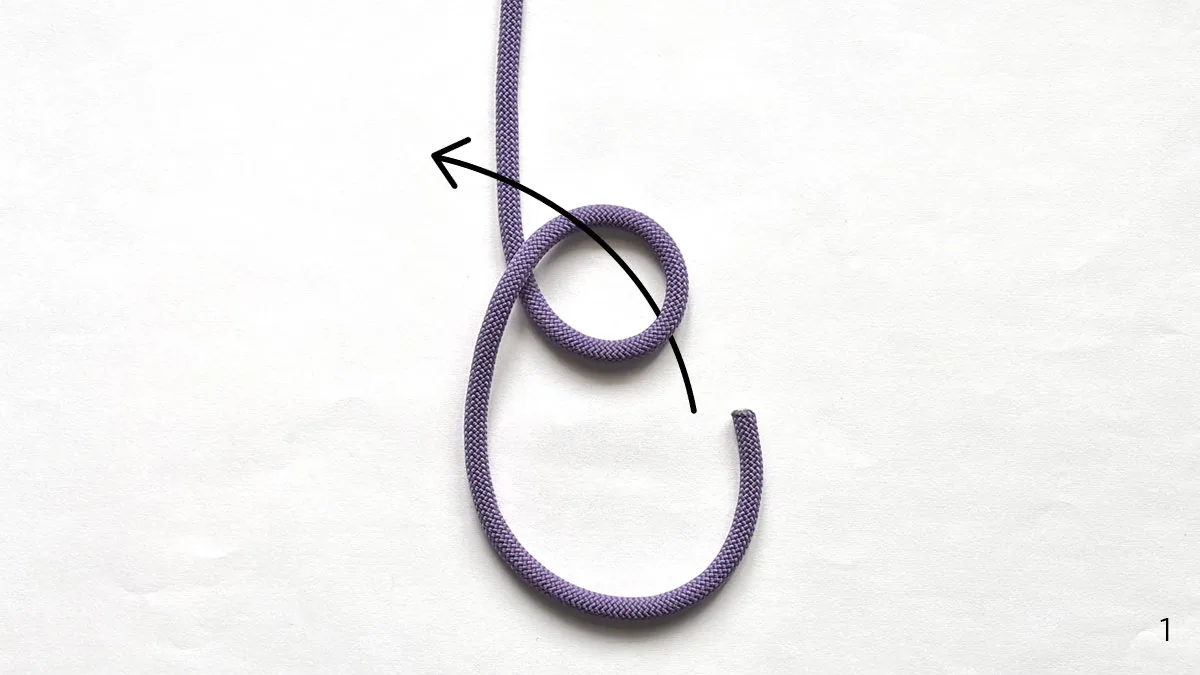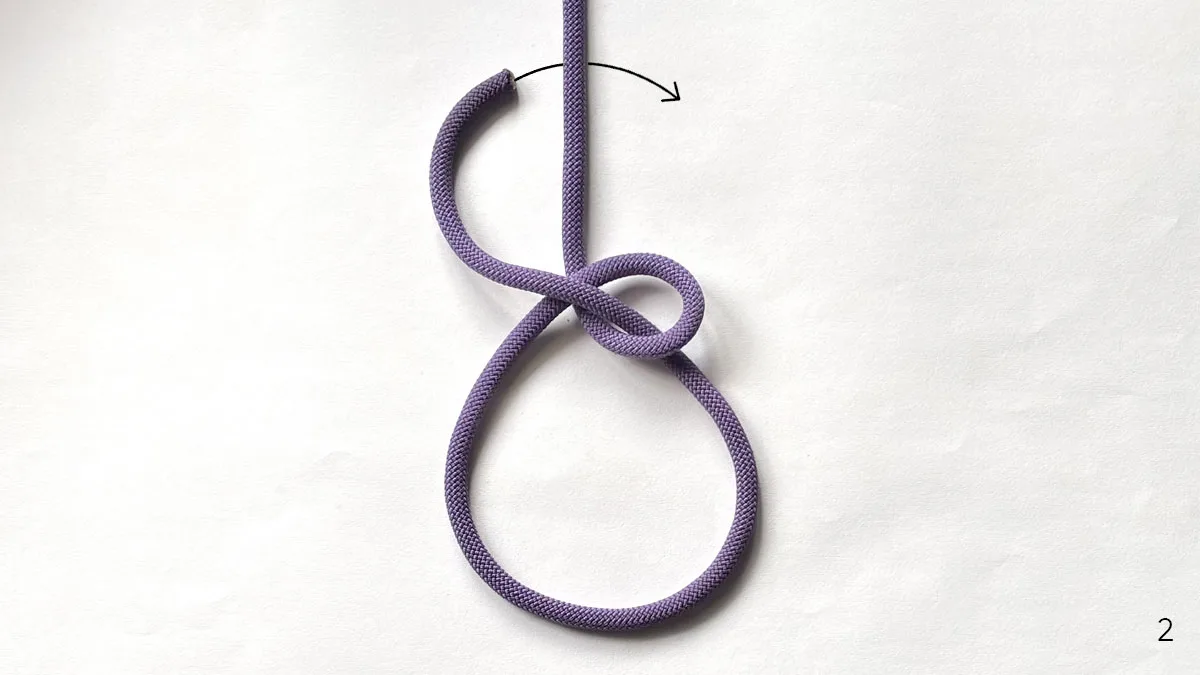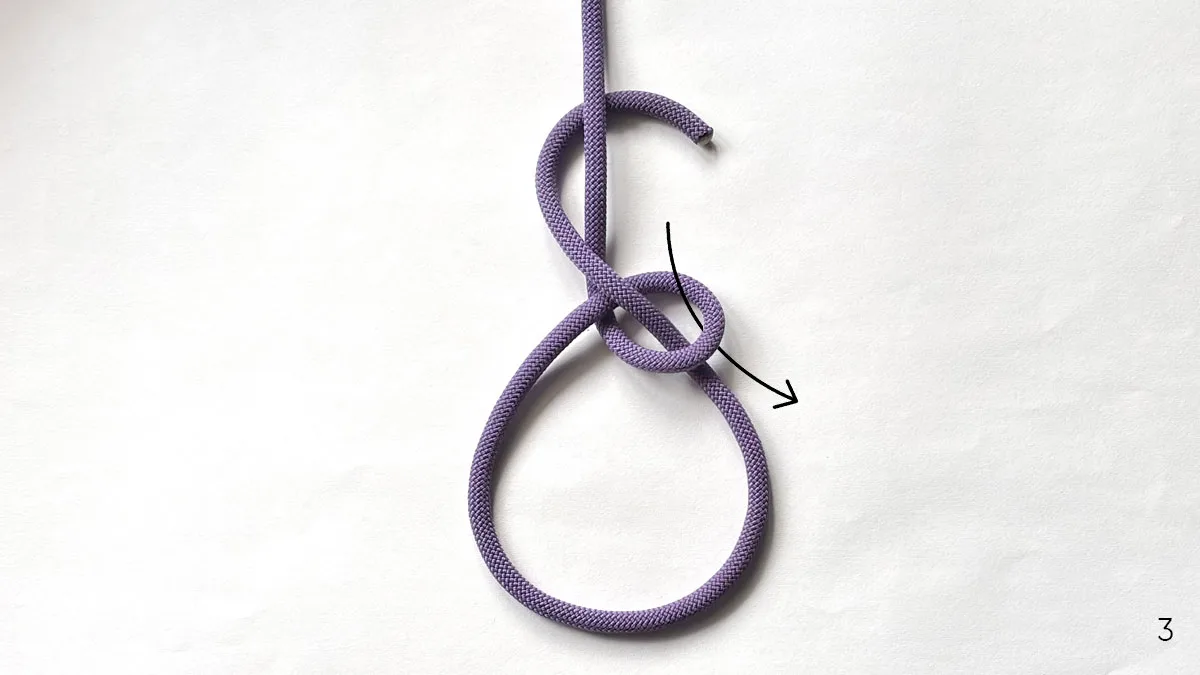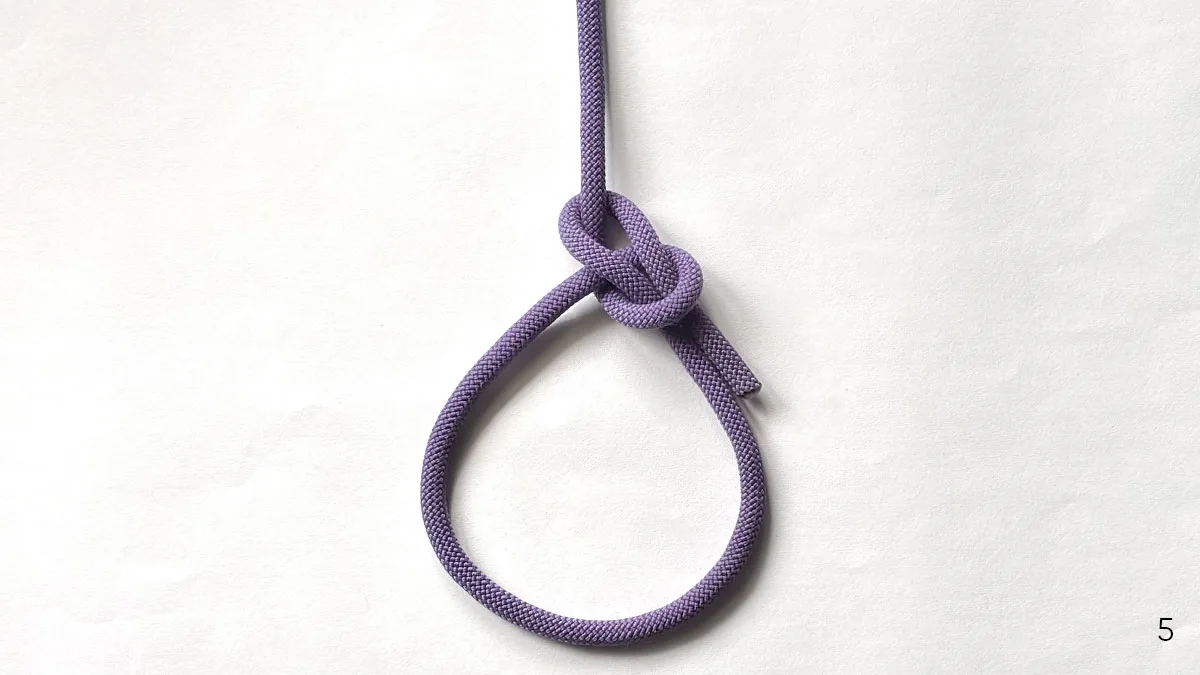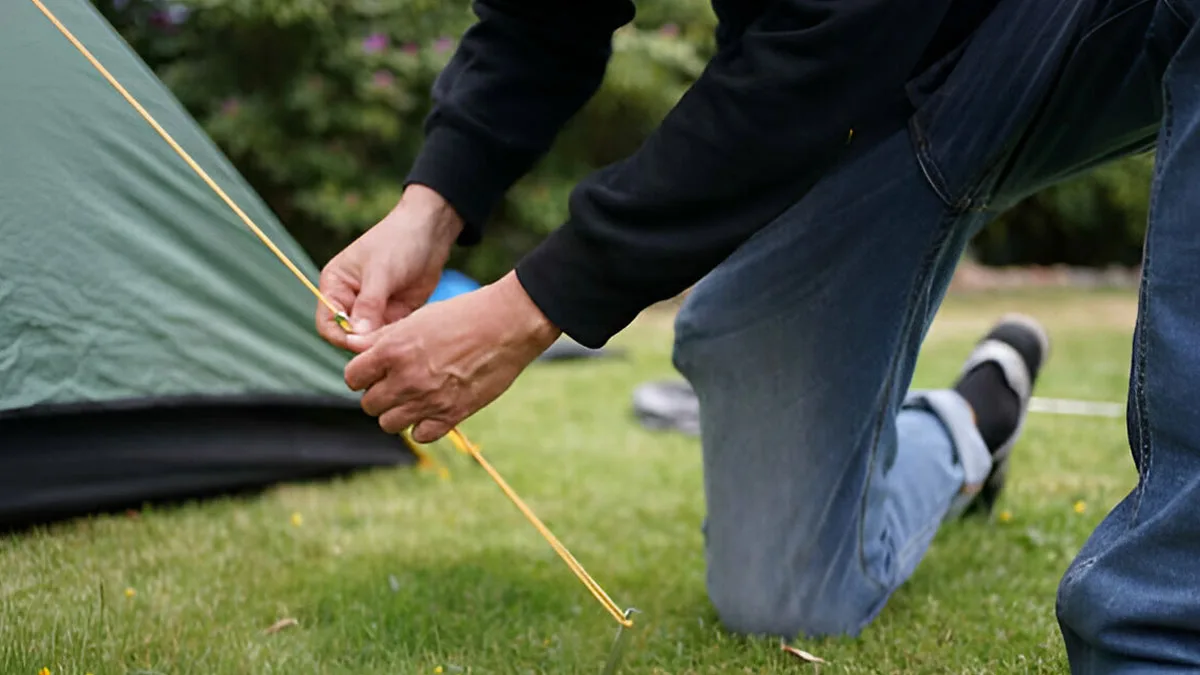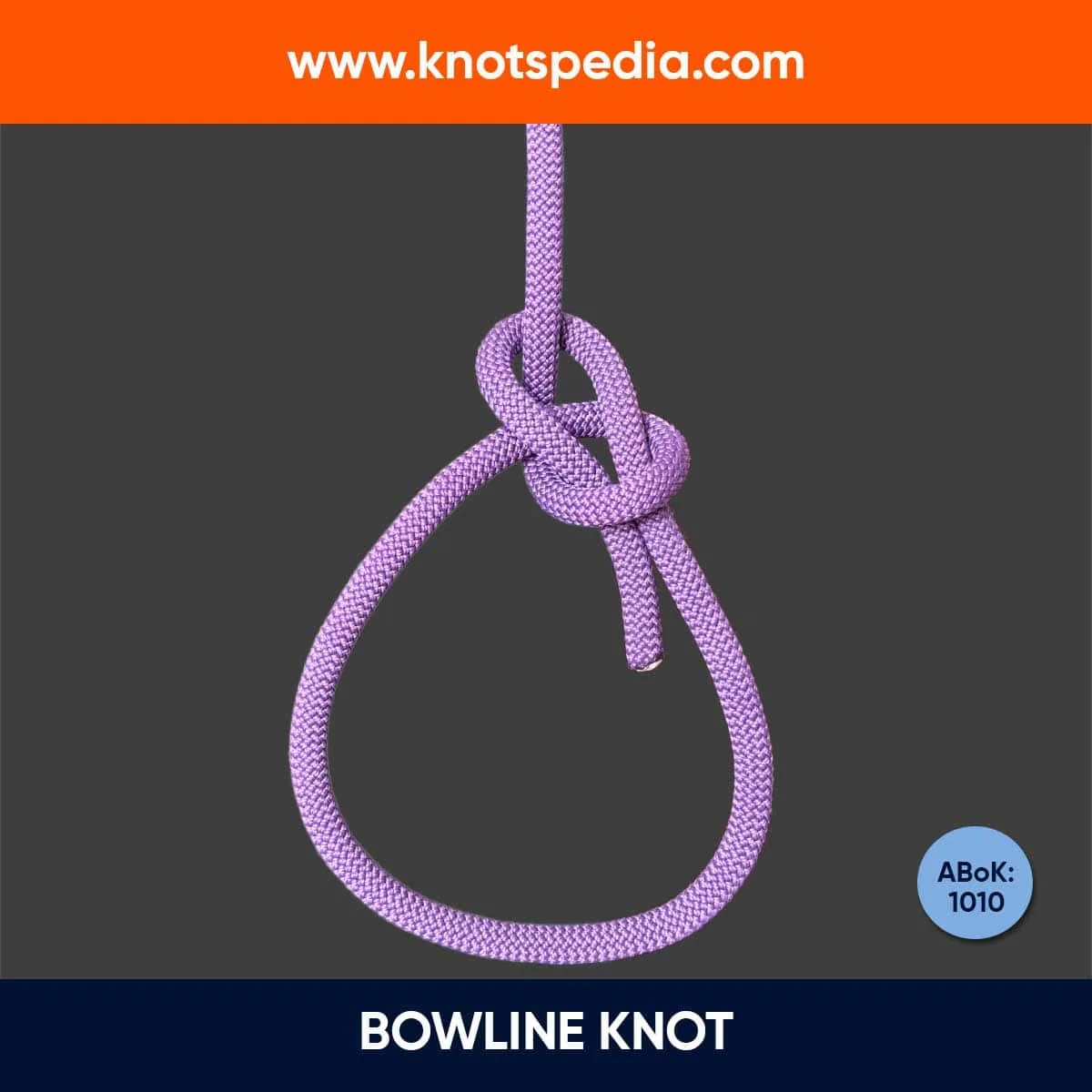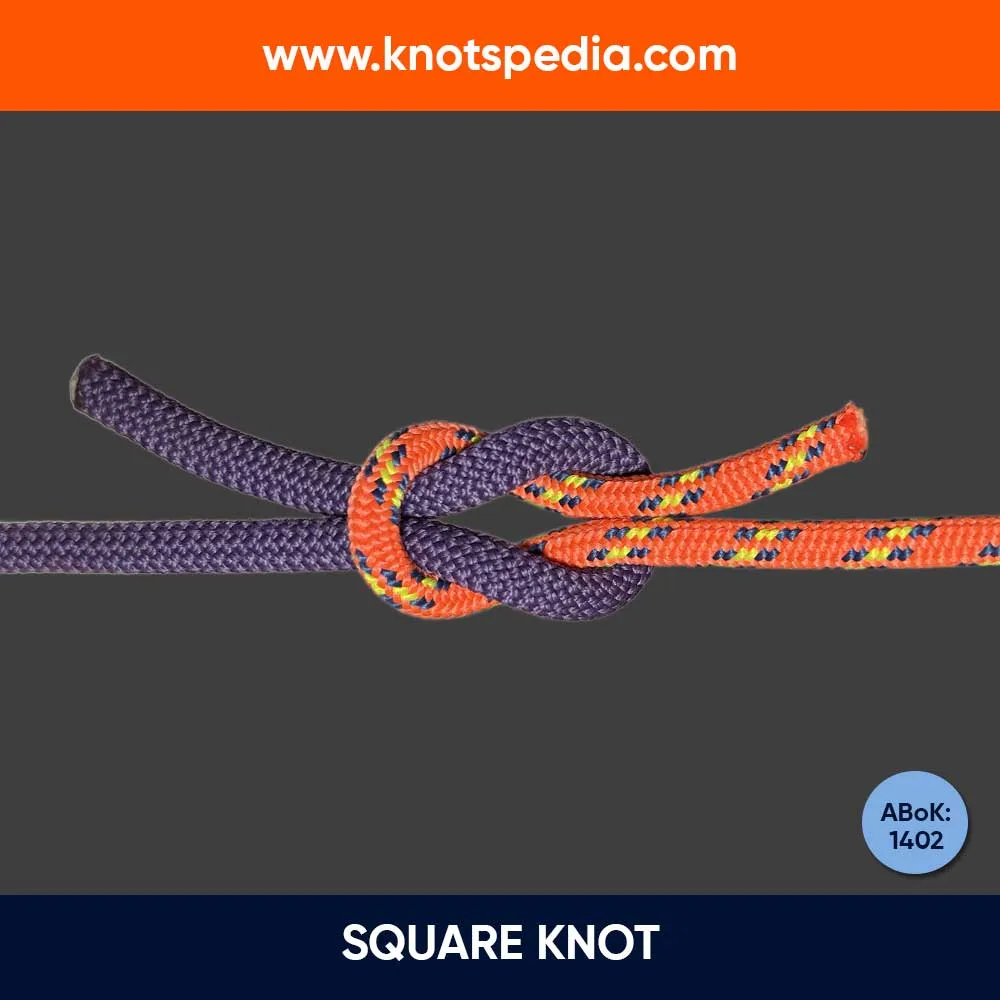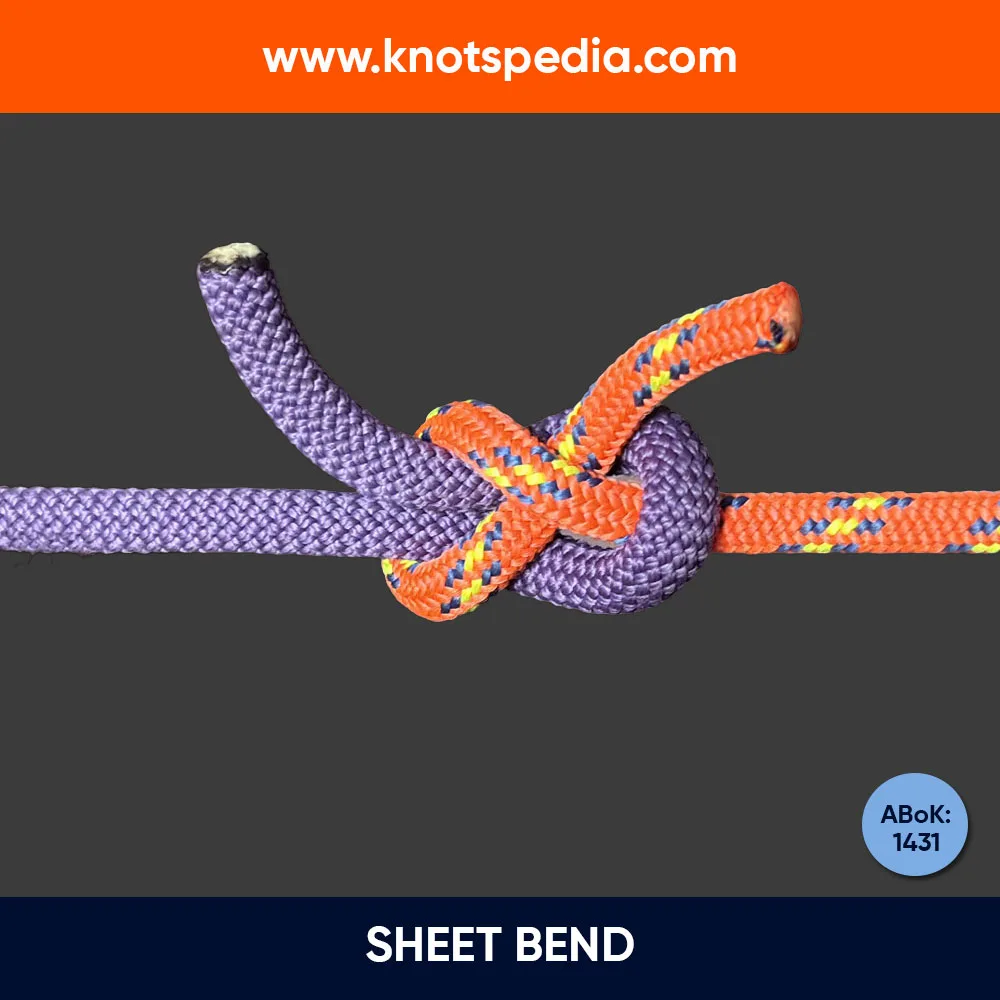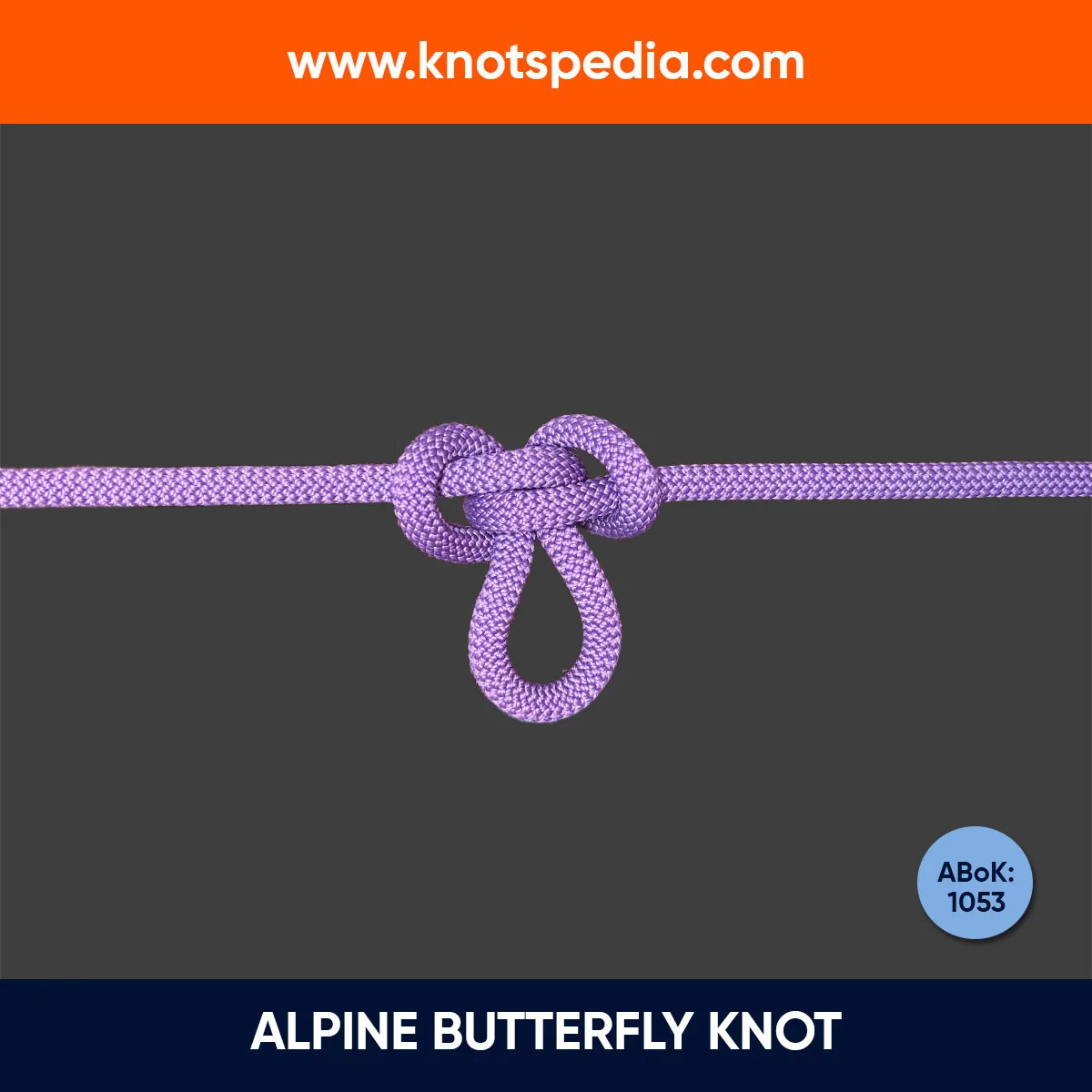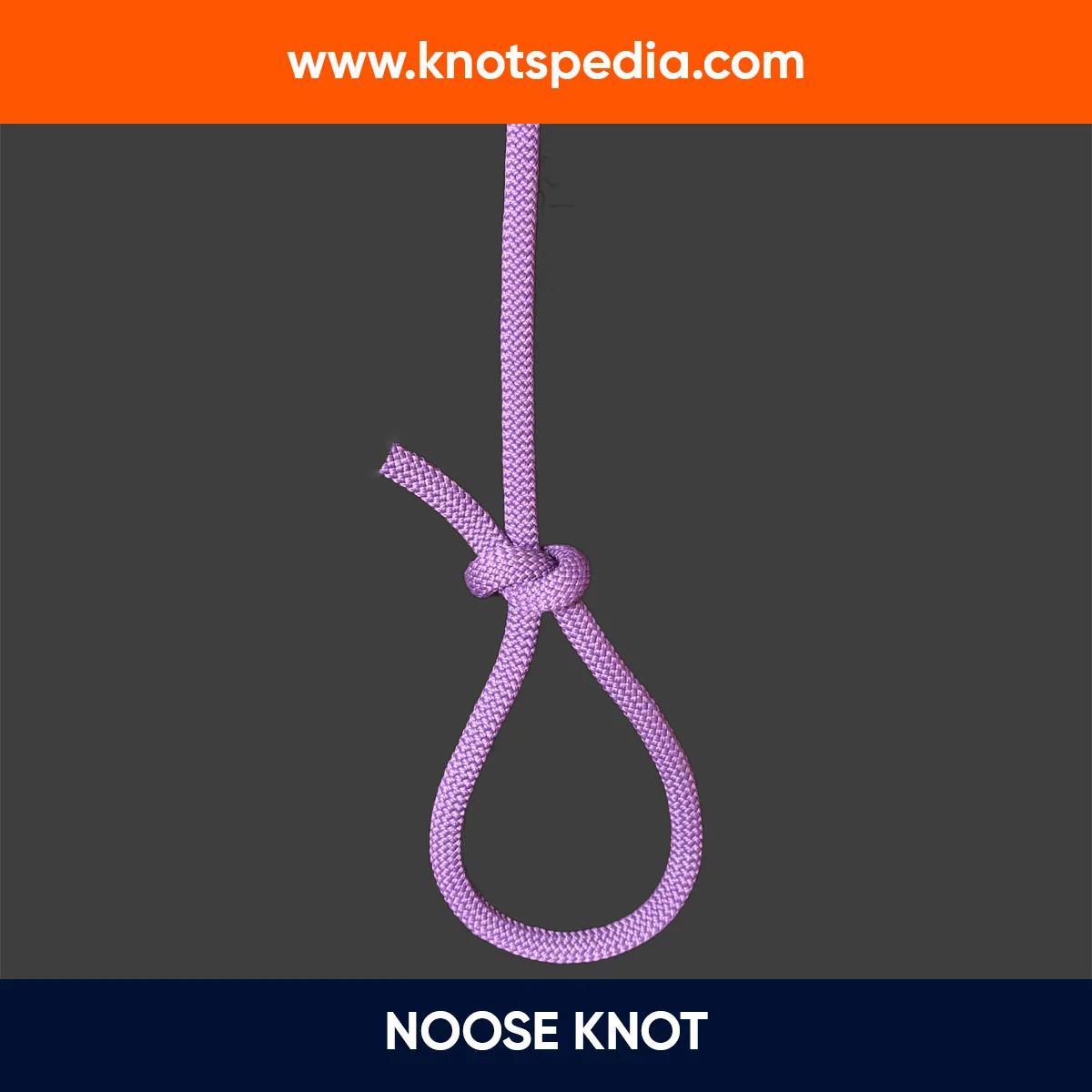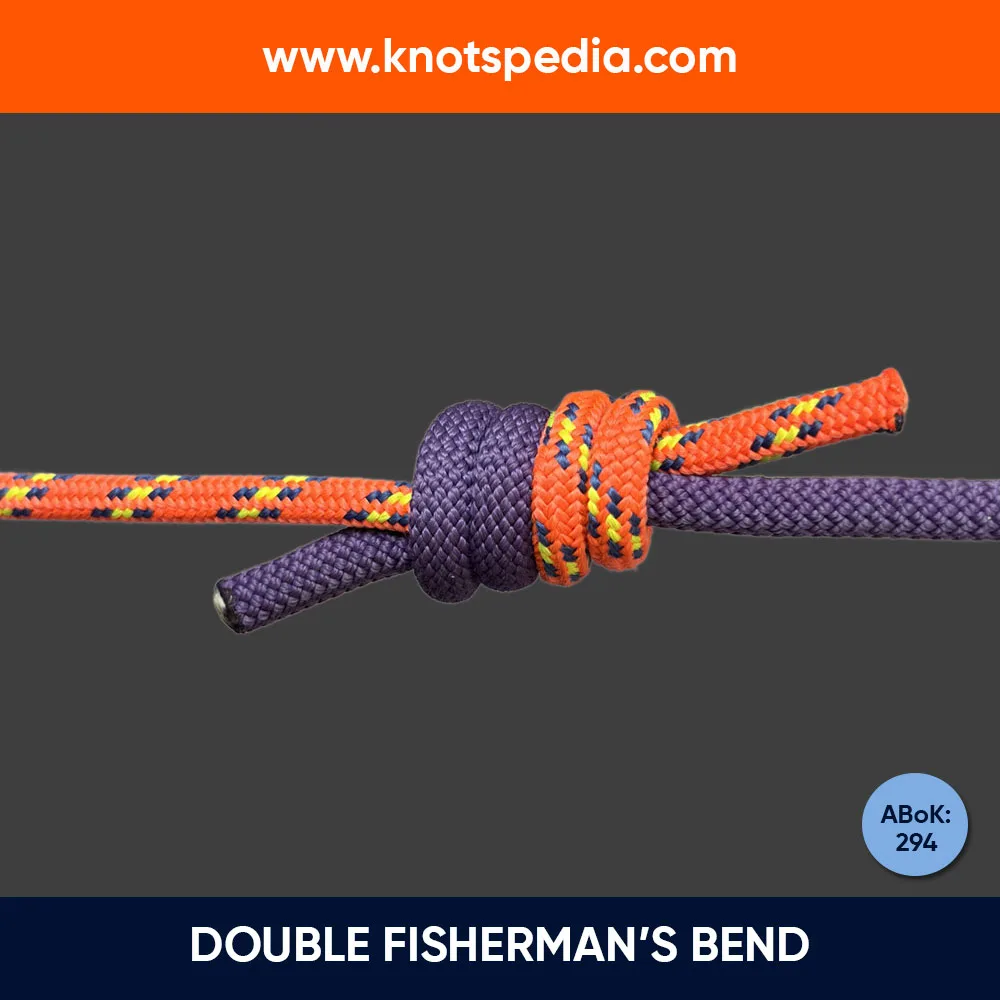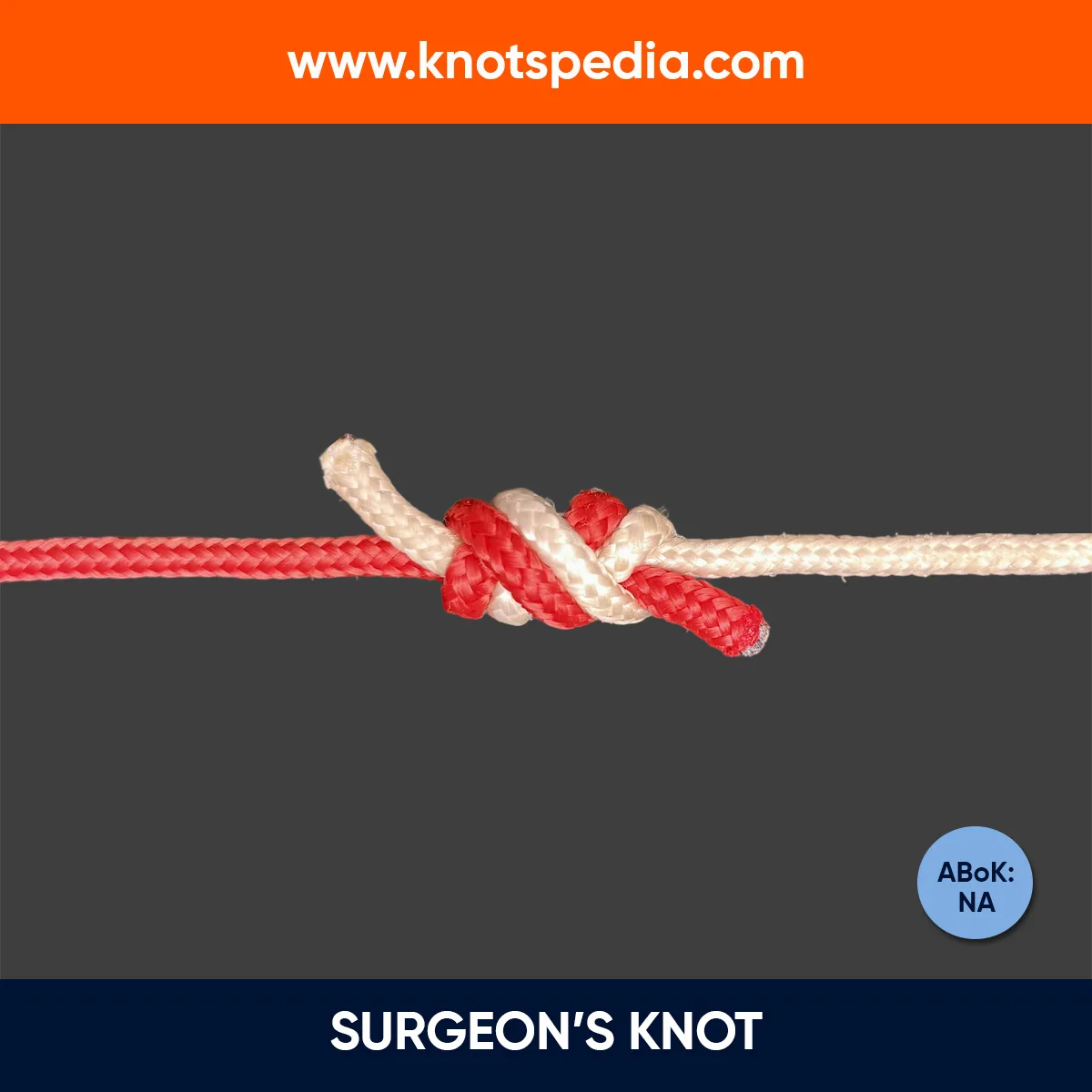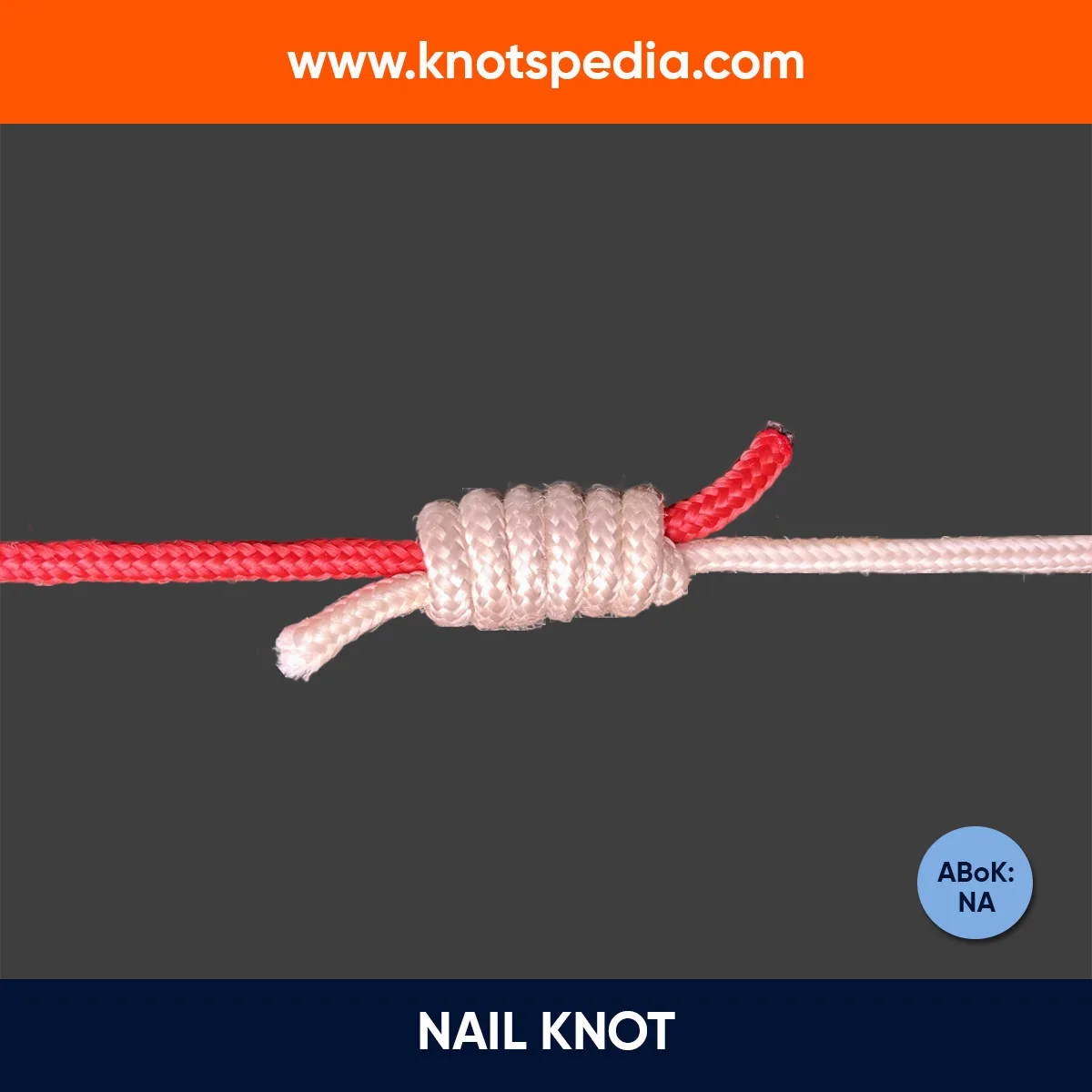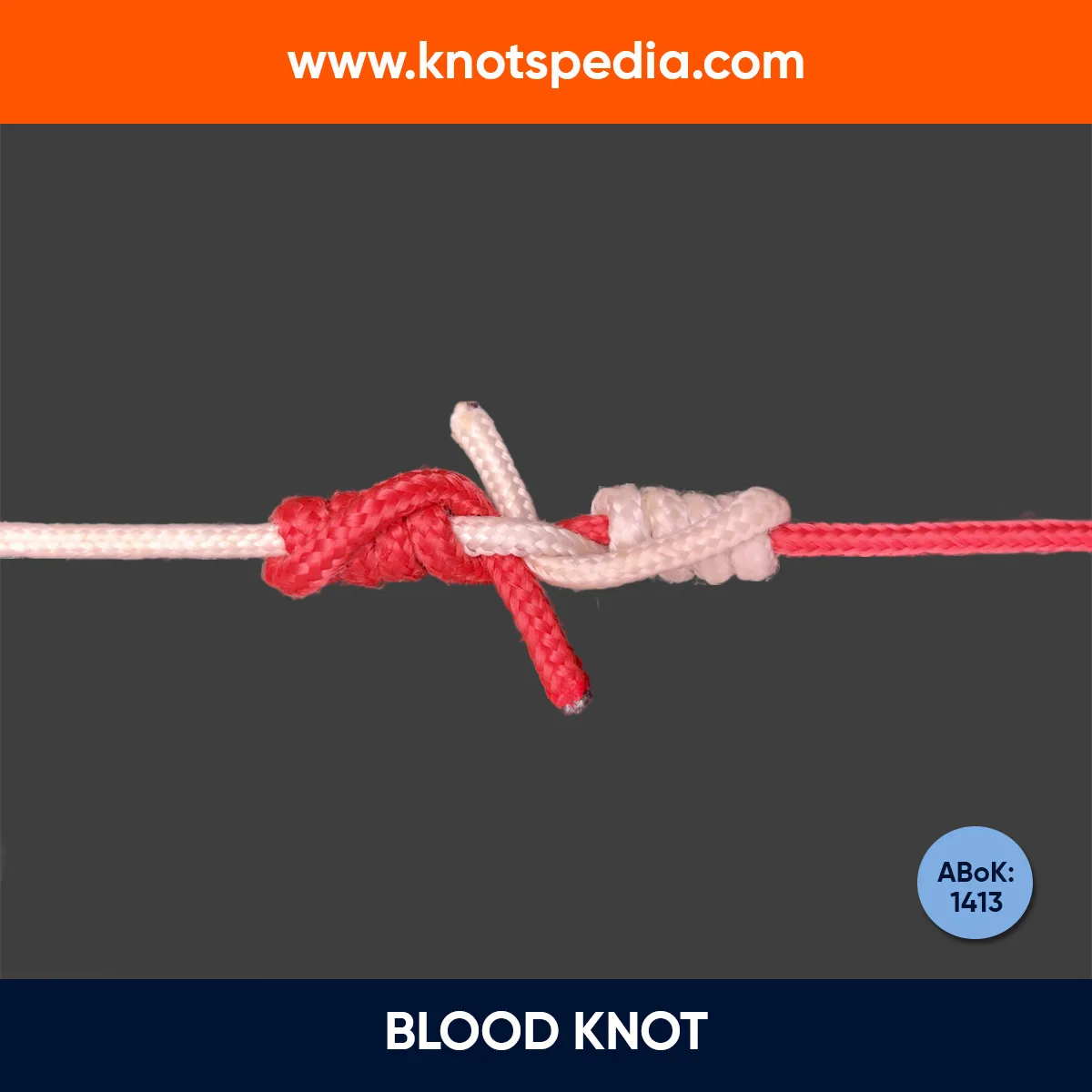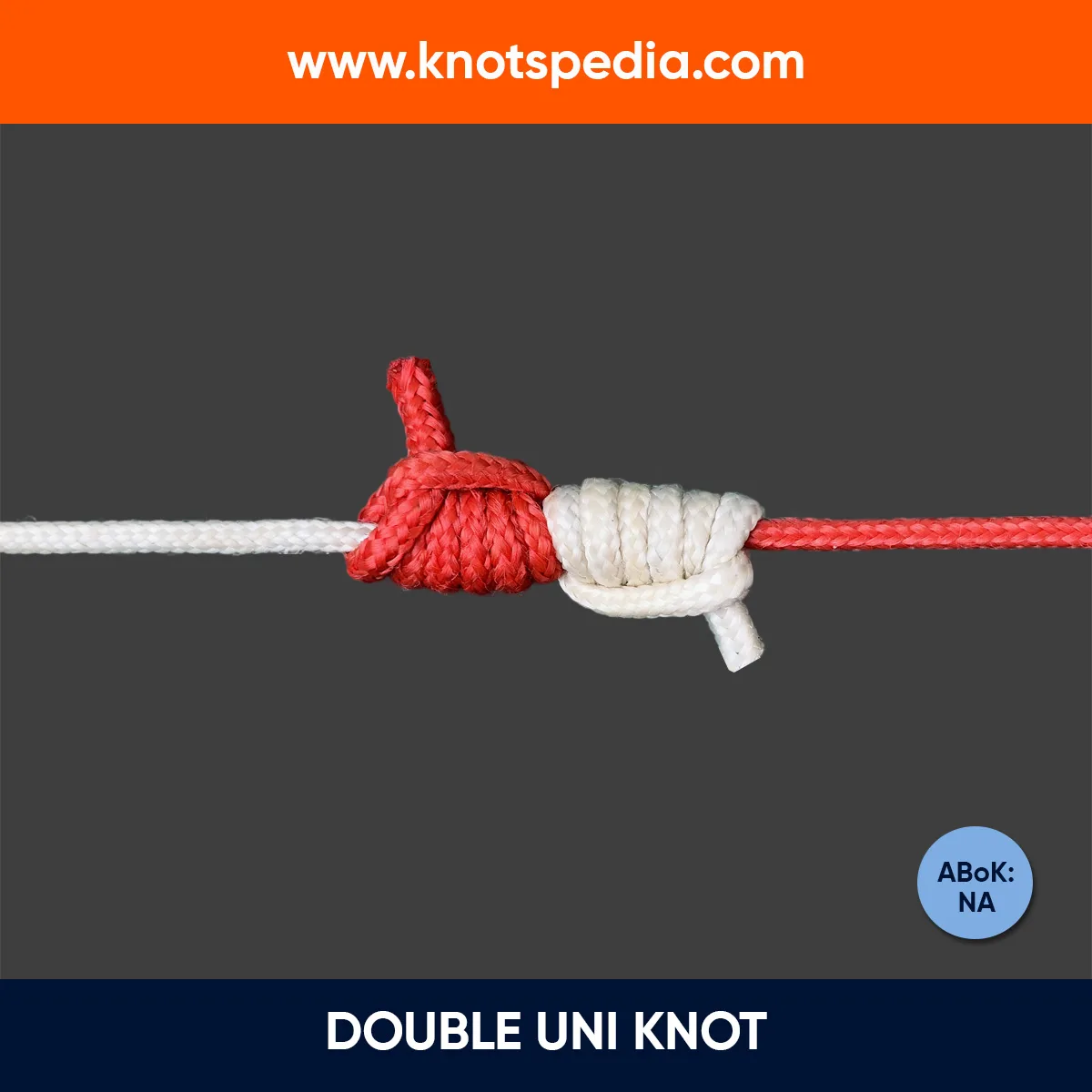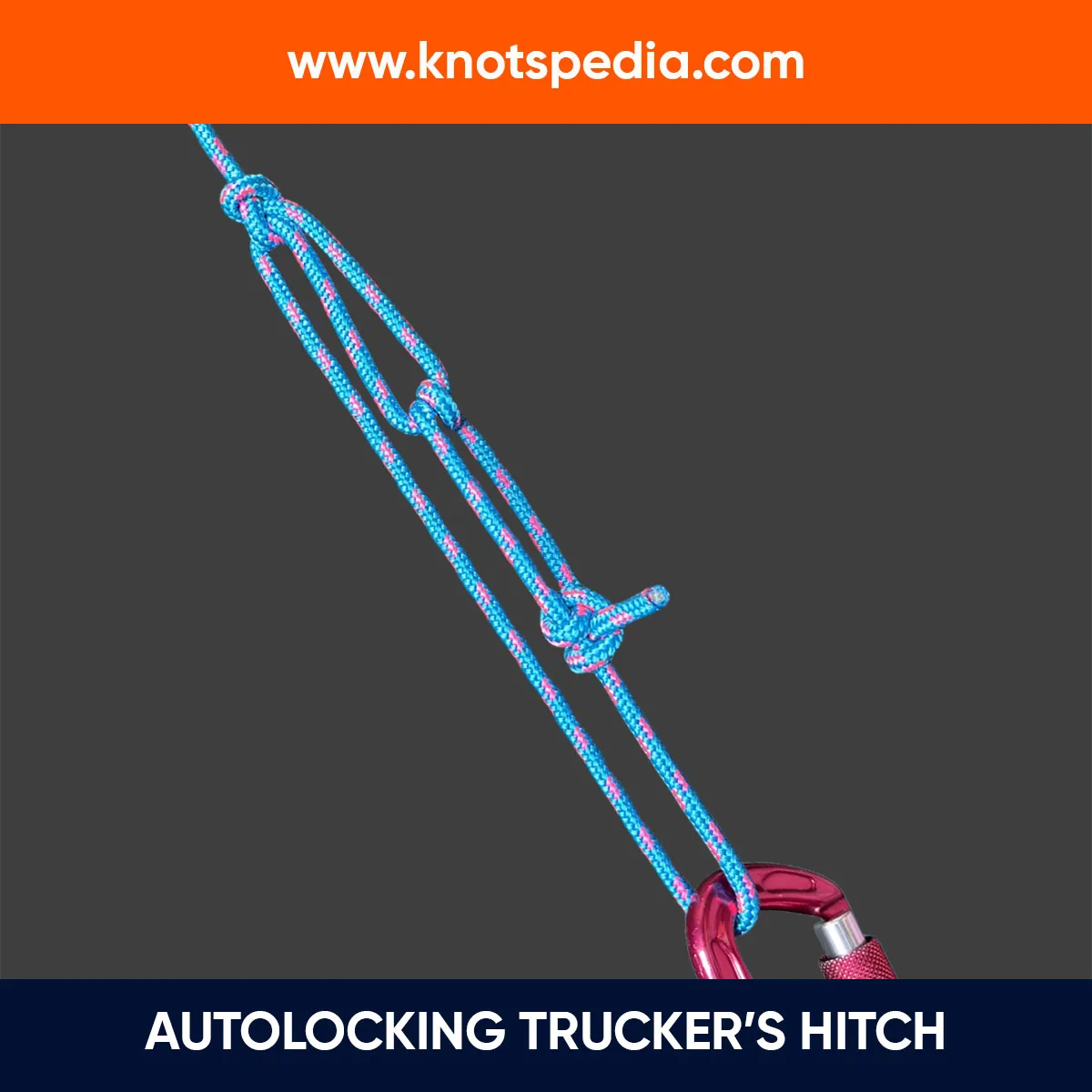The Cowboy Bowline is another variation of the Bowline knot.
It is tied similar to the Bowline but has a slight difference; the working end ends up on the outside of the loop.
It performs better under certain loading conditions than the regular Bowline.
Let’s check it in detail!
Cowboy Bowline Details
Type: Loop
Other Names: Dutch Bowline, Dutch Marine Bowline, Left-hand Bowline
ABoK Reference: #1034½
How to Tie a Cowboy Bowline
- Make a loop in the rope.
- Pass the tag end through the loop.
- Pass it under the standing end.
- Feed it through the loop.
- Tighten the knot.
You have done this correctly if the tag end is on the outside of the loop. The regular Bowline has the tag end on the inside.
Cowboy Bowline Step by Step
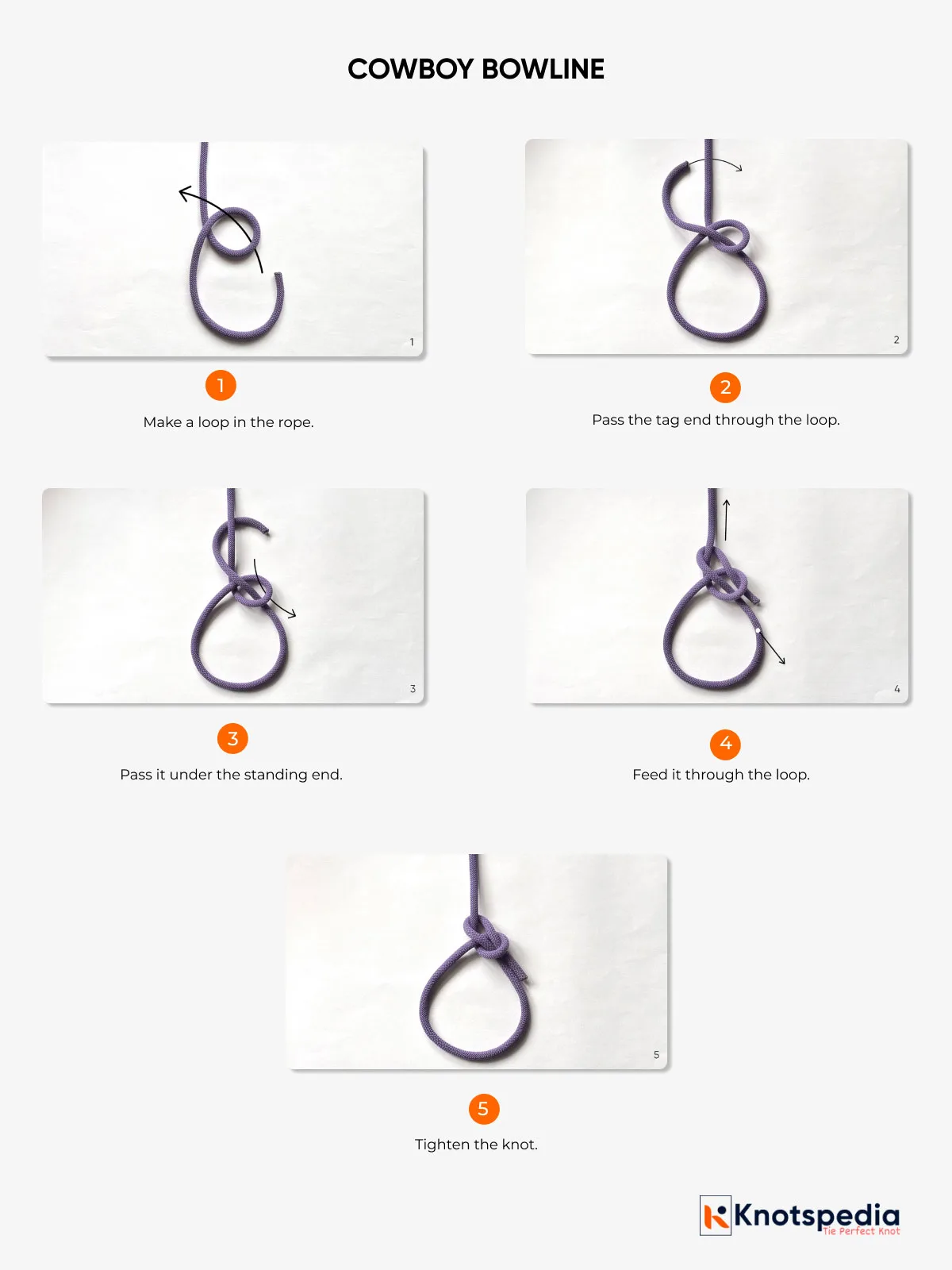
Strength of Cowboy Bowline
Here’s the honest truth: most evidence suggests that the two knots are nearly identical in strength.
If you look in the Ashley Book of Knots, it says that the Cowboy Bowline is inferior to the regular Bowline.
That said, a study from PACI suggested that the simple Bowline is vulnerable to transverse loading (that’s when the rope is pulled sideways).
The Cowboy Bowline performs well under such loading conditions. But under dynamic loads, neither of them is safe.
Should You Use the Cowboy Bowline?
So, the big question: should you be using the Cowboy Bowline at all?
Short Answer: It depends!
Some studies suggest that Cowboy Bowline works best under certain conditions, but it does not have any huge advantage over simple Bowline.
They both have similar knot strength, and no data shows that one is superior.
In fact, professional guidelines like USCG, Navy, and arborist safety standards validate the tail inside version.
Even Ashley said the regular Bowline is superior.
Many people who use this knot might not know that the Cowboy Bowline exists!
So, should you use it?
It’s okay to use this knot for casual applications. Just don’t use it for critical applications like climbing, caving, and mountaineering.
In fact, both regular and Cowboy Bowline are not inherently secure and should never be used for life-critical applications.
If safety is needed, use the Double Bowline, Yosemite Bowline, Water Bowline, or the Figure 8 follow through.
Always back up these knots with the safety backup knot.
Like the Article? Share it or Bookmark it for future reference!
